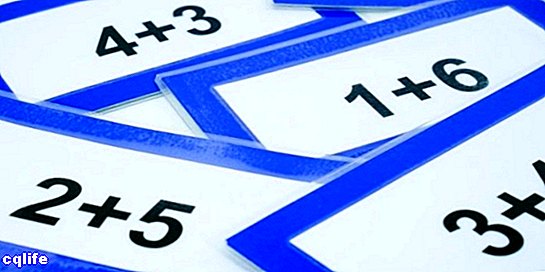We explain what addition or addition is in mathematics, its history, properties and examples. Also, methods for adding fractions.

What is the sum?
The addition or addition is a fundamental mathematical operation, which consists of the incorporation of new elements to a set numerical, that is, to the fusion of two numbers to obtain a new one, which expresses the total value of the previous two. The addition is the fundamental principle with which we learn to connect with numbers, since the mere fact of counting one by one (1, 2, 3, 4 ...) involves adding 1 (1 + 0, 1 + 1, 1 + 2, 1 + 3…).
The sum is an arithmetic type operation, which allows combining numbers of different types: natural, integers, fractions, real, rational, irrational and complex, as well as structures associated with them, such as vector spaces or matrices. At algebra Modernism is represented by the symbol +, inserted between the elements to be added, and expressed verbally as "more": "1 + 1 = 2" is read "one plus one equals two".
On the other hand, the elements to be added are known as "addends", and the number obtained at the end is called "result".
History of the sum
Addition is one of the oldest and most basic mathematical operations known. It is thought that the human being From the Neolithic age, it already handled elementary mathematical principles, among which would necessarily be addition and subtraction, since these operations are easy to evidence in the face of agricultural supplies that increased and decreased according to the time of year.
However, the study of addition and its application to both natural and fractional numbers began with the ancient Egyptians, and continued to develop in more complex ways with the Babylonians, and especially with the Chinese and Hindus, who were the first to add numbers. negatives. But only in the Renaissance the banking boom imposed the sum of decimals and vulgar logarithms.
Properties of the sum
The addition as a mathematical operation has a set of properties, which are:
- Commutative property. It establishes that the order of the addends does not alter the result, that is, that a + b is exactly the same as b + a, and in both cases the same result is obtained.
- Associative property. It establishes that when adding three or more elements, it is possible to group two of them to solve them first, regardless of what they are, without altering the final result. That is, if we want to add a + b + c, we can choose two ways: (a + b) + c or a + (b + c), without affecting the result at all.
- Identity property. It establishes that zero is a neutral element in the operation, so adding it with any other number will always result in the same last number: a + 0 = a.
- Closing property. It establishes that the result of a sum will always belong to the same numerical set of addends, as long as these in turn share the same set. That is, if the addends a and b belong to N (natural), Z (integers), Q (irrational), R (real) or C (complex), the result of the sum will also belong to the same set.
Examples of addition
Here are some simple addition examples:
- A woman has four flowers, but it is her birthday and she is given eight more. How many flowers does he have at the end of the day? 4 flowers + 8 flowers = 12 flowers.
- A shepherd has 15 sheep, while a colleague of his has 13. If they decide to merge their flocks, how many sheep will they have in all? 15 sheep + 13 sheep = 28 sheep.
- An apple tree gives its owner 5 apples a month. How many apples will he have at the end of one year? Since a year is 12 months, we must add 5 twelve times, applying the associative property: (5 + 5) + (5 + 5) + (5 + 5) + (5 + 5) + (5 + 5) + (5 + 5) = (10 + 10) + (10 + 10) + (10 + 10) = 20 + 20 + 20 = 60 apples in a year.
Sum of fractions
When adding fractions, there are different methods that we can apply to obtain the result, depending on whether it is proper, improper and mixed fractions.
- Method for adding fractions with the same denominator. This is the simplest case, in which we simply add the numerators and keep the same denominator. For example:

or

- Butterfly method. This method allows us to add any type of fractions with different denominators, simply multiplying the numerator of the first by the denominator of the second and vice versa, and then adding the products (to obtain the numerator), and then multiplying the denominators to obtain the denominator of the final fraction. Once these operations have been carried out, we will often have to reduce the result. For example:

- Method for adding three fractions. In this case, we simply add the first two and add the last to the result, applying the previous method and reducing or simplifying the result if necessary. For example:

